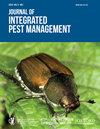利用农民田间学校进行马铃薯病虫害综合治理的人力和技术层面:国际马铃薯中心和合作伙伴在马铃薯晚疫病管理方面的经验
IF 2.7
3区 农林科学
Q1 ENTOMOLOGY
引用次数: 9
摘要
20世纪90年代,国际马铃薯中心(CIP)马铃薯晚疫病综合病虫害管理(IPM)小组开始通过将作物保护与社会和行为科学相结合,解决这一复杂马铃薯疾病的管理问题。自21世纪初以来,该团队一直与亚洲、撒哈拉以南非洲和南美洲国家的研发组织合作,利用农民田间学校(FFS)开发基于农民发现的学习方法。当农民能够亲自试验管理晚疫病的各种选择,特别是具有抗病能力的新马铃薯克隆时,他们对晚疫病控制的原则就更加明显和了解。自那以来,国际创新中心及其合作伙伴采用了一种将农民田间学校与参与式研究相结合的方法,以促进农民获得信息、知识和技术。随后编写了若干手册,指导农民实施ffs - ipm -晚疫病。结果表明,使用该方法的农民学习了新知识,评估了新的马铃薯无性系,并改变了作物管理做法。因此,秘鲁农民的马铃薯产量和收入平均提高了32%;其他国家也发生了类似的变化。参与式研究和培训方法的重大影响超出了ipm -晚疫病。例如,在秘鲁和玻利维亚,2005年至2012年期间,在马铃薯、其他作物(咖啡、可可、果树)和牲畜的IPM上实施了2000多个田间FFS。在乌干达和埃塞俄比亚,经验扩大到马铃薯种子管理,成立了种子合作社。我们从这次经历中吸取了教训。本文章由计算机程序翻译,如有差异,请以英文原文为准。
Human and Technical Dimensions of Potato Integrated Pest Management Using Farmer Field Schools: International Potato Center and Partners’ Experience With Potato Late Blight Management
In the 1990s, the integrated pest management (IPM) team for potato late blight (IPM-late blight) at the International Potato Center (CIP) began to address the management of this complex potato disease by combining crop protection with social and behavioral sciences. Since the early 2000s, the team has worked with research and development organizations in countries in Asia, sub-Saharan Africa, and South America to develop farmer discovery-based learning methods using farmer field schools (FFS). The principles of late blight control were more visible and understood by farmers when they could test options for managing late blight, particularly new potato clones with resistance to the disease, for themselves. CIP and partners have since adapted an approach combining FFS and participatory research to facilitate farmers’ access to information, knowledge, and technologies. Several manuals to implement FFS-IPM-late blight with farmers were subsequently developed. Results indicated that farmers using this approach learned new knowledge, assessed new potato clones, and changed crop management practices. Hence farmers realized a 32% average increase in potato productivity and income in Peru; similar changes occurred in other countries. The participatory research and training approach had a significant impact beyond IPM-late blight. In Peru and Bolivia, for example, more than 2,000 FFS were implemented between 2005 and 2012 on IPM for potato, other crops (coffee, cocoa, fruit trees), and livestock. In Uganda and Ethiopia, the experience expanded to potato seed management with the formation of seed cooperatives. Lessons have been drawn from this experience.
求助全文
通过发布文献求助,成功后即可免费获取论文全文。
去求助
来源期刊

Journal of Integrated Pest Management
Agricultural and Biological Sciences-Insect Science
CiteScore
5.80
自引率
3.60%
发文量
24
审稿时长
25 weeks
期刊介绍:
Journal of Integrated Pest Management is an open access, peer-reviewed, extension journal covering the field of integrated pest management. The Editors-in-Chief are Dr. Marlin E. Rice (formerly with Iowa State University) and Dr. Kevin L. Steffey (formerly with the University of Illinois). The journal is multi-disciplinary in scope, publishing articles in all pest management disciplines, including entomology, nematology, plant pathology, weed science, and other subject areas.
 求助内容:
求助内容: 应助结果提醒方式:
应助结果提醒方式:


